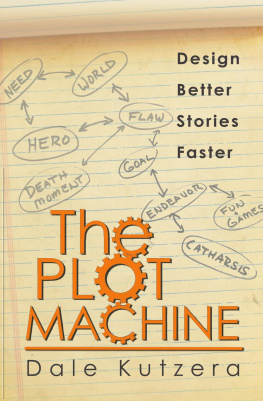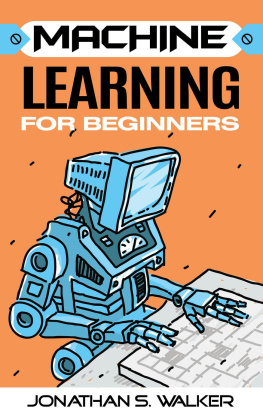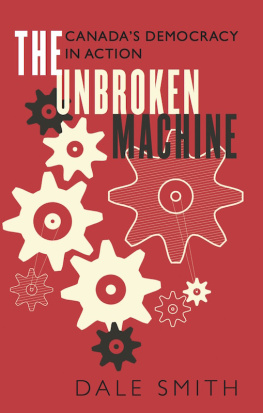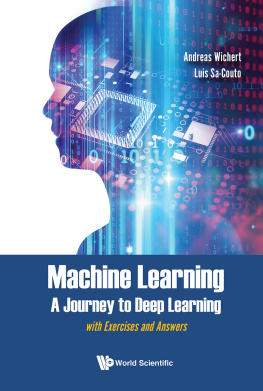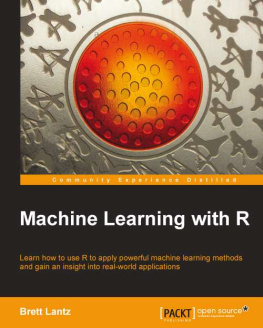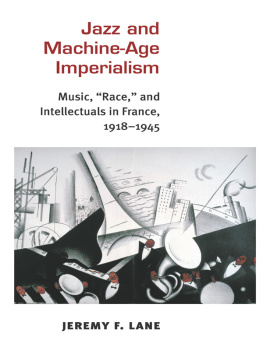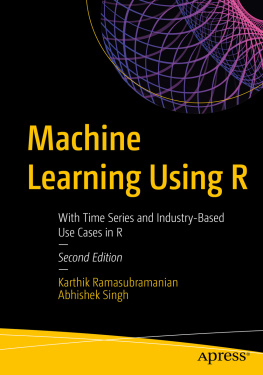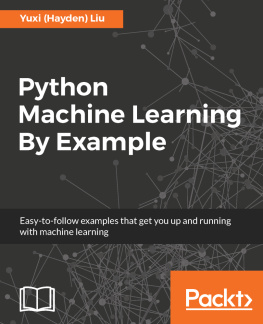Dale Lane - Machine Learning for Kids
Here you can read online Dale Lane - Machine Learning for Kids full text of the book (entire story) in english for free. Download pdf and epub, get meaning, cover and reviews about this ebook. year: 2021, publisher: No Starch Press, genre: Home and family. Description of the work, (preface) as well as reviews are available. Best literature library LitArk.com created for fans of good reading and offers a wide selection of genres:
Romance novel
Science fiction
Adventure
Detective
Science
History
Home and family
Prose
Art
Politics
Computer
Non-fiction
Religion
Business
Children
Humor
Choose a favorite category and find really read worthwhile books. Enjoy immersion in the world of imagination, feel the emotions of the characters or learn something new for yourself, make an fascinating discovery.
- Book:Machine Learning for Kids
- Author:
- Publisher:No Starch Press
- Genre:
- Year:2021
- Rating:5 / 5
- Favourites:Add to favourites
- Your mark:
- 100
- 1
- 2
- 3
- 4
- 5
Machine Learning for Kids: summary, description and annotation
We offer to read an annotation, description, summary or preface (depends on what the author of the book "Machine Learning for Kids" wrote himself). If you haven't found the necessary information about the book — write in the comments, we will try to find it.
Machine Learning for Kids — read online for free the complete book (whole text) full work
Below is the text of the book, divided by pages. System saving the place of the last page read, allows you to conveniently read the book "Machine Learning for Kids" online for free, without having to search again every time where you left off. Put a bookmark, and you can go to the page where you finished reading at any time.
Font size:
Interval:
Bookmark:

MACHINE LEARNING FOR KIDS. Copyright 2021 by Dale Lane.
All rights reserved. No part of this work may be reproduced or transmitted in any form or by any means, electronic or mechanical, including photocopying, recording, or by any information storage or retrieval system, without the prior written permission of the copyright owner and the publisher.
ISBN-13: 978-1-7185-0056-3 (print)
ISBN-13: 978-1-7185-0057-0 (ebook)
Publisher: William Pollock
Executive Editor: Barbara Yien
Production Editor: Rachel Monaghan
Developmental Editors: Patrick DiJusto and Athabasca Witschi
Cover and Interior Design: Octopod Studios
Technical Reviewer: Maya Posch
Copyeditor: Rachel Monaghan
Compositor: Happenstance Type-O-Rama
Proofreader: Holly Bauer Forsyth
For information on book distributors or translations, please contact No Starch Press, Inc. directly:
No Starch Press, Inc.
245 8th Street, San Francisco, CA 94103
phone: 1-415-863-9900;
www.nostarch.com
Library of Congress Cataloging-in-Publication Data
Names: Lane, Dale, author.
Title: Machine learning for kids : a project-based introduction to
artificial intelligence / Dale Lane.
Description: San Francisco : No Starch Press, [2020] | Includes index. |
Summary: An introduction to machine learning and artificial
intelligence, using the Scratch programming language. Provides
instructions to make a game that can learn hand motions, a chatbot that
can answer questions, a computer assistant that can learn simple
commands, and more-- Provided by publisher.
Identifiers: LCCN 2020033935 (print) | LCCN 2020033936 (ebook) | ISBN
9781718500563 (paperback) | ISBN 9781718500570 (ebook)
Subjects: LCSH: Artificial intelligence--Juvenile literature. | Machine
learning--Juvenile literature. | Scratch (Computer program
language)--Juvenile literature.
Classification: LCC Q335.4 .L36 2020 (print) | LCC Q335.4 (ebook) | DDC
006.3/1--dc23
LC record available at https://lccn.loc.gov/2020033935
LC ebook record available at https://lccn.loc.gov/2020033936
No Starch Press and the No Starch Press logo are registered trademarks of No Starch Press, Inc. Other product and company names mentioned herein may be the trademarks of their respective owners. Rather than use a trademark symbol with every occurrence of a trademarked name, we are using the names only in an editorial fashion and to the benefit of the trademark owner, with no intention of infringement of the trademark.
The information in this book is distributed on an As Is basis, without warranty. While every precaution has been taken in the preparation of this work, neither the author nor No Starch Press, Inc. shall have any liability to any person or entity with respect to any loss or damage caused or alleged to be caused directly or indirectly by the information contained in it.
Dale Lane is a senior developer for IBM with a background in artificial intelligence and machine learning. He has worked on a wide variety of AI projects for IBM clients and spent several years as a developer of IBMs AI platform Watson.
Maya Posch is a software and hardware developer with a focus on C++, Ada, and VHDL. She works as a freelance developer in addition to writing fiction and nonfiction works.
Ive had a huge amount of help to make this book happen, so I owe a lot of thanks to the staff at No Starch Press, including my publisher, Bill Pollock; my editor, Barbara Yien; my production editor and copyeditor, Rachel Monaghan; my developmental editors, Patrick DiJusto and Athabasca Witschi; and my technical reviewer, Maya Posch.
I am very grateful to the Lifelong Kindergarten Group at the MIT Media Lab for inventing Scratch, having the foresight to include a mechanism for extending it with new blocks, and generously making it all available (including the source code) free of charge. They make it possible for projects like Machine Learning for Kids to be built.
Finally, Id like to thank John Keble CofE Primary School in Hursley for allowing me to develop and test the projects in this book with their students.
When my dad was a child, growing up in Illinois after the turn of the centurynot this century, mind you, but the previous oneradio was getting started, the zipper had just been invented, Charlie Chaplin was all the rage, Lindberg had not yet crossed the Atlantic, the Titanic sunk, the Model T was released, and most of the world was still being governed by various monarchies or vast, sprawling empires. When I was a child, growing up in the Great Plains of Texas, we had just landed humans on the moon, computers were huge, expensive beasts, the internet had not yet been invented, plastic was starting to become widespread, and talking to someone on the other side of the world was prohibitively expensive for all but a few. I spent many a lazy summer afternoon making gunpowder in my bedroom (sorry, Mom!), launching model rockets, and dreaming about going to the stars. I built my first computer from scratch when I was 12, and when I say from scratch, I mean literally from individual transistors, diodes, resistors, and transistors. Id read about this remarkable robot called Shakey by the good folks at the Stanford Research Institute, and I sat mesmerized in the movie theater watching HAL from 2001: A Space Odyssey. I knew then and there that I wanted to build computers that would take people to the stars.
And now, here I am, doing very much that.
Right now, the world is a very, very different place than what my father and I experienced growing up. In some ways its better, in others it is not, but one thing that has not changed is our ability to dream and to work to make those dreams become reality. Today, you can gain access to the worlds knowledge using a device you can hold in your hand. Its possible to talkand seesomeone on the other side of the world, or even in space, in real time. Cars are now electric, and some of them even drive themselves. Not only have we gone to the moon, but Mars is now populated entirely by robots, and we have sent spacecraft beyond our solar system. Thanks to computers, we can produce more for less, we make art that augments and even transcends reality, we have extended our bodies and our minds, and we study the cosmos in ways far deeper and broader than wed ever imagined.
The even more remarkable thing is that, owing to the fact that computers have gotten so inexpensive and their computational power so vast, almost anyone can learn how to use computers to build things that are limited only by our imagination. This is where computational thinking comes in, a way of approaching the world in terms of abstractions and algorithms that make it possible to turn our imagination into systems that run on our computers. To build a program that does your finances, or controls the heating in your house, or calculates the trajectory of a rocket flung into space, youll think mostly in terms of symbols. But, if you want to build a car that drives itself, a robot that interacts safely with humans, or a video game that gives challenging virtual opponents, youll need to use a different way of working with computers, and that is where artificial intelligence and machine learning come into play. From the time of Alan Turingone of the pioneers of computingcomputer scientists have tried to make computers that reason and learn and behave as humans, and recent advances in machine learning have made it possible for us today to build such things.
Font size:
Interval:
Bookmark:
Similar books «Machine Learning for Kids»
Look at similar books to Machine Learning for Kids. We have selected literature similar in name and meaning in the hope of providing readers with more options to find new, interesting, not yet read works.
Discussion, reviews of the book Machine Learning for Kids and just readers' own opinions. Leave your comments, write what you think about the work, its meaning or the main characters. Specify what exactly you liked and what you didn't like, and why you think so.


